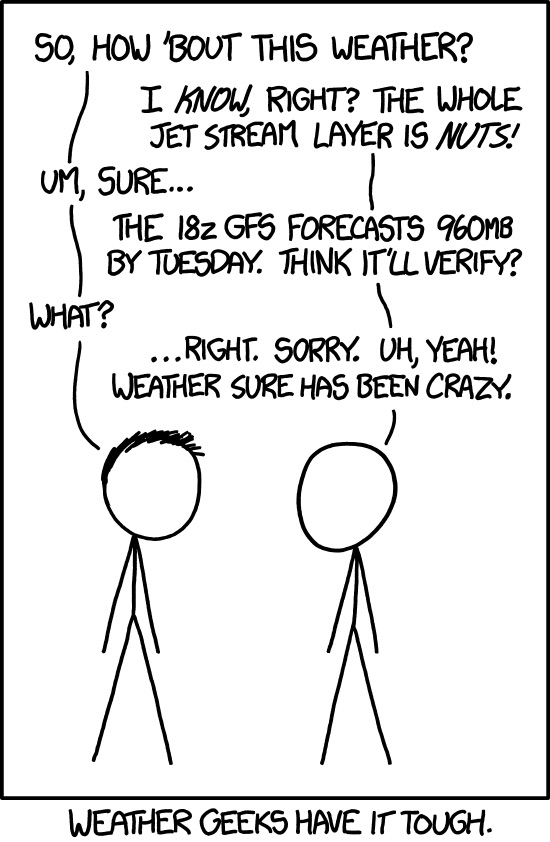Coupled atmosphere-ocean data assimilation re-interpreted
by Polly Smith
So my original plan for this blog was to write something about my research on coupled atmosphere-ocean data assimilation but then my PI Amos Lawless beat me to it with his recent post. I was pondering on how I might put a new spin on things when I remembered someone telling me about the Up-Goer Five challenge. The idea is to try to describe a complicated subject using only the thousand most common English words. A quick google search shows that as usual I am rather late to the party – plenty of people have already had a go and there are some brilliant descriptions out there.
This is what I came up with …
People want to know if it will be hot or cold, dry or raining today, tomorrow, next month, next year and further. People who work with large pretend worlds on big computers want to get better at telling everyone what might happen to help them plan ahead; to do this we need to look at what both the near-sky and big blue water are doing now and what they might do in time to come. To get the best guess going forward we have to start from the right point. My work is trying to help the big computer people move forward with this problem. This is hard because there are lots of things we do not know about how the real world near-sky and big blue water work and about the conversations they have together; they are joined to each other but not in an easy way. Seeing what the near-sky is doing can help us understand the big blue water and seeing what the big blue water is doing can help us understand the near-sky, but we can’t see everything all the time. Our approach is to use the things we already understand about how the near-sky and big blue water work together to make a small pretend world on a computer, and then add some numbers seen from the real world about what the near-sky and big blue water are doing close to now and what they were doing in the near past. We also give the computer a starting guess and tell it how good we think this first guess is and how good we think the seen world is – this is hard to know for sure but we are working on different ways to do this as best we can. The computer takes our directions and puts all this stuff together in an amazing way to give us an even better starting point from which we can build a picture of how things may look going forward. Things can change very quickly in the real world so finding exactly the right answer is not possible, but we can make a very good guess and we expect to get even better as we continue to work hard to learn more about the world.
This was far from easy, but a really useful exercise in describing science in a non-technical way; a great idea if you want to try and communicate your science to a wider audience. Why not give it a go?

